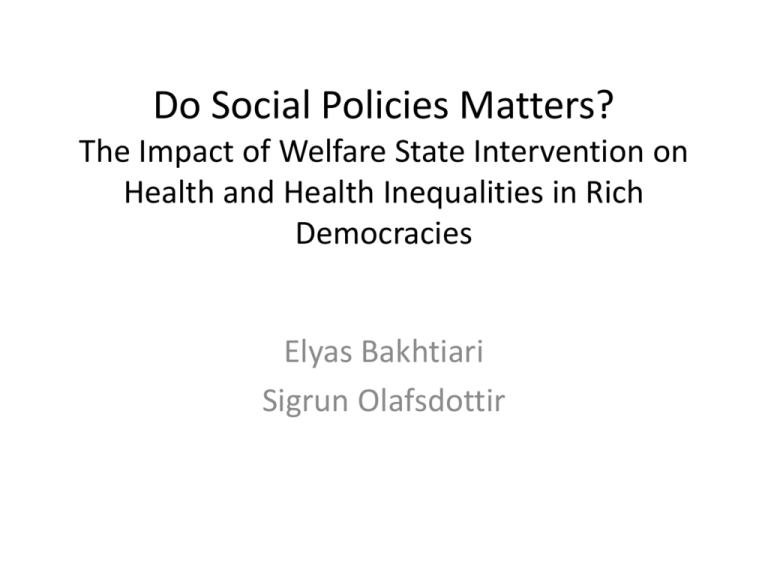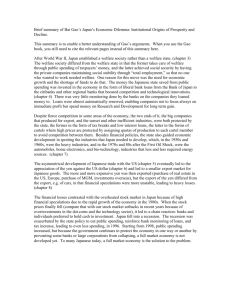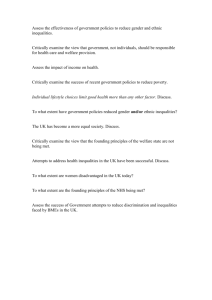Do Social Policies Matters? The Impact of Welfare State Intervention
advertisement

Do Social Policies Matters? The Impact of Welfare State Intervention on Health and Health Inequalities in Rich Democracies Elyas Bakhtiari Sigrun Olafsdottir Introduction • Social conditions/position theorized as a fundamental cause of health and illness • Cross-national comparison: – How consistent or variable is the link between social position and health across contexts? – How do “upstream” social conditions affect the link between social position and health outcomes? Goals 1. Conceptualize and analyze health inequality as a dependent variable 2. Map the extent of variation in health inequality across contexts 3. Assess the relationship between health inequalities and welfare state size 4. Assess the relationship between health inequalities and targeted welfare state intervention (health spending) The Welfare State and Health Possible mechanisms for influencing health inequalities: • Citizenship: Shapes boundaries of inclusion/exclusion • Cultural: Social organization shapes/reflects overarching national culture • Redistribution: Defines relationship between state, market, citizens • Targeted intervention: Healthcare system, unemployment benefits, family support, etc. Previous research • Welfare state and health – Some evidence suggesting better overall health in more generous welfare regimes • Welfare state and health inequalities – Gender, SES disparities vary across welfare regimes – Mixed findings on effect of welfare generosity – Variation without clear explanation Data • ISSP 2011 Health Module – 28 countries • OECD – Total social expenditures, per capita – Total social expenditures, percent of GDP • WHO – Public expenditures on health, per capita – Public expenditures on health, percent of GDP Methods • Health gradients – Education (bottom versus top quartile) – Income (bottom versus top quartile) – Gender (female versus male) – Ethnicity (minority versus majority) • Binary logistic regression on probability of poor health • Comparison of difference in predicted probability of poor health Results: Variation • Education and Income – Consistent direction across contexts – Variation in size of effect • Gender and minority status – Variation in both direction and size of health gradient – Mostly non-significant difference between groups Variation in Health Gradient by Edu. Variation in Health Gradient by Inc. Variation in Health Gradient, Gender Variation in Health Gradient, Ethnicity Results: Welfare State Spending • Self-reported health – Negative association with public health spending – No association with welfare state size • Health gradients – Gender gap negatively associated with public health spending; No association with welfare state size – Gap between minority and majority groups unrelated to social spending – Education and income gradients unrelated to social spending Welfare State Spending and SelfReported Health Public Health Spending and SelfReported Health Welfare State Spending and Gender Health Inequalities Public Health Spending and Gender Health Inequalities Conclusions • General welfare state size unrelated to health and health inequalities • Targeted welfare state intervention (health spending) may be more influential • Non-linear relationship: Additional public health spending more beneficial at lower levels Challenges and Future Research • Measuring the welfare state – Generosity versus coverage – Matching spending and health indicators • Replication with other health measures – Limitations of self-assessments of health across contexts • Theoretical questions – Investigating other “upstream” political, economic, and social conditions









